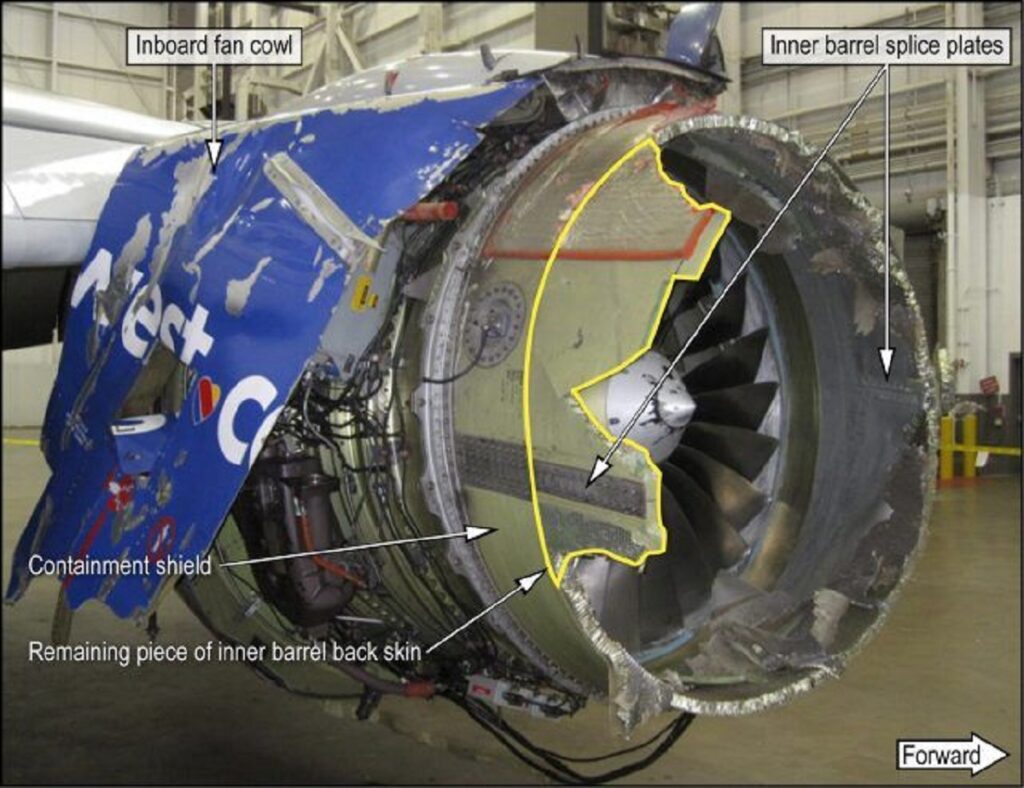
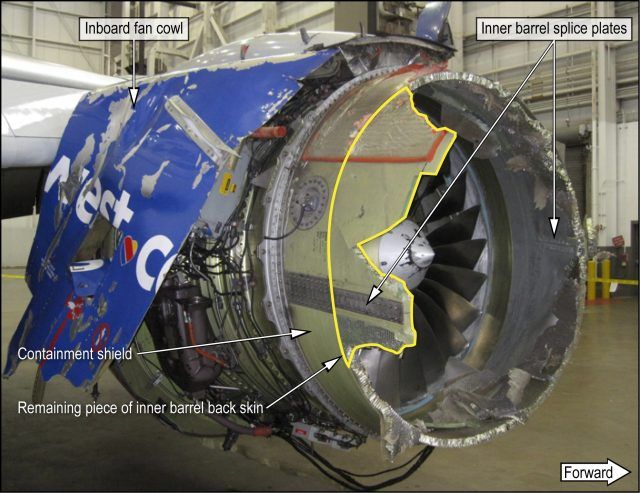
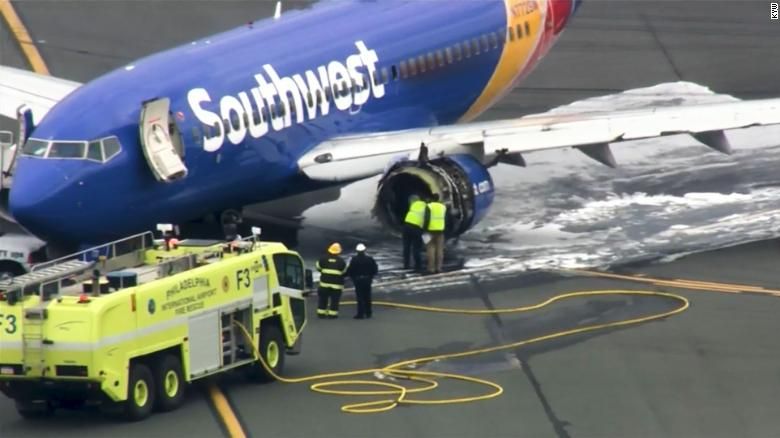
From the Vault -Lessons Learned from Aircrash Investigation !
✈On April 17th, 2018, Southwest Airlines Boeing 737 operating as Flight 1380 suffered uncontained engine failure, when a fan blade broke off from it’s turbofan engine on the left side of the jet.
✈The failure threw engine shards/Cowl FOD against the side of the jet causing a damage to the fuselage.
✈The explosive depressurization partially pulled a belted passenger out of the hole created by the engine failure, resulting in her death.
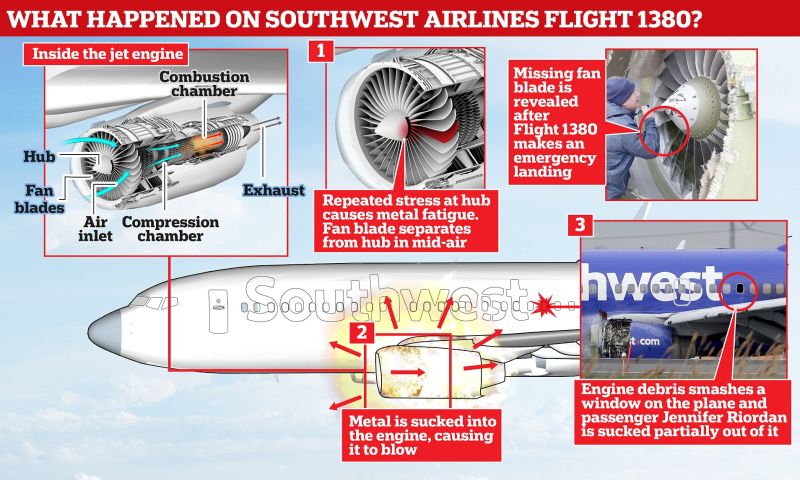
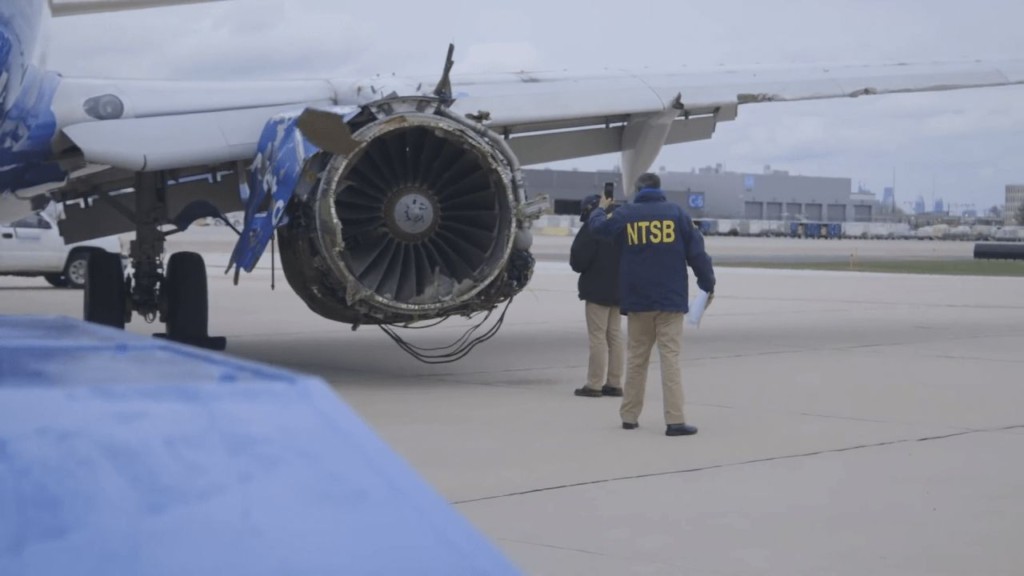
✈The NTSB concluded that the engine came apart when a fan blade separated from the engine, blowing the engine cowling apart.
✈The aircraft was fitted with two CFM56-7B24 engines.
The left engine failure occurred when one of the fan blades fractured at its root [ Known as a fan-blade-out (FBO) event].
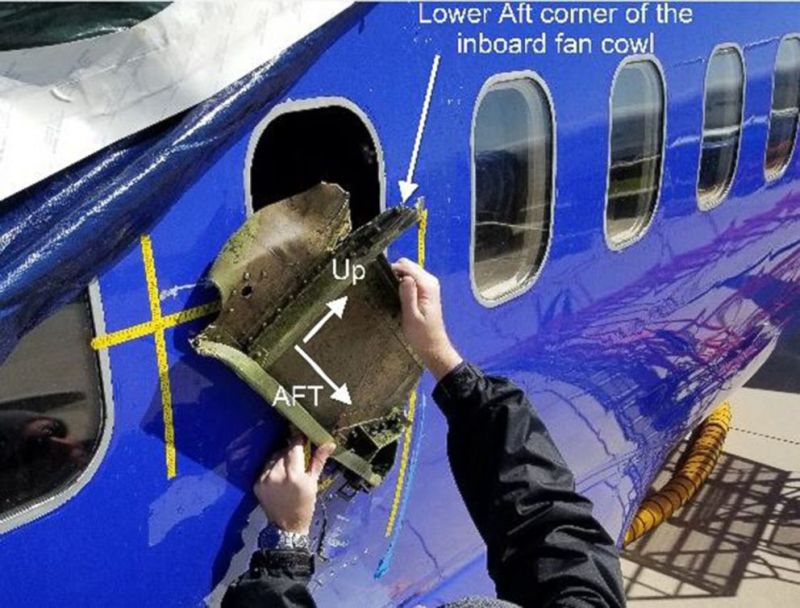
✈The fan blade fractured due to a low-cycle fatigue crack that initiated in the dovetail (blade root), which remained within a slot of the fan disk.
✈FAA mandated a new type of inspection, an eddy current inspection (ECI) in addition to required fluorescent penetrant inspection (FPI).
✈NTSB recommended Boeing to look into the design of the cowling & the fuselage to determine how to better protect against such mishaps in the future.

Author – Tanmay Palei
Sr. Aircraft Structure Engineer

